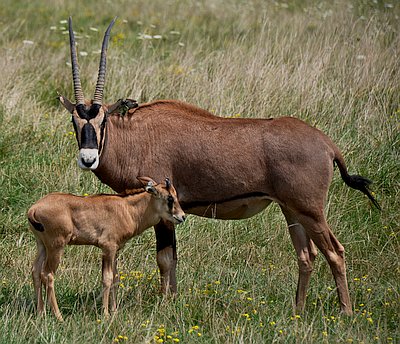Echoes of Eden
Instead of eating baby antelopes, this lion wants to love and protect them.
The grown lioness (pictured [photo available only in Creation Magazine]) baffled experts earlier this year when she adopted a two-week-old baby oryx, a kind of antelope which is normally a favourite prey of lions.1
When the lioness first came across the oryx calf (in Kenya’s Samburu National Park) it was lying in shade, waiting for its mother to return from grazing nearby. She quickly adopted the oryx, giving it affection and assiduously protecting it from a leopard and other predators as though it were her own cub.2 Incredibly, she even allowed the mother oryx to come and feed her calf occasionally before scaring the mother away. For its part, the calf seemed happy to follow alongside the lioness and, when resting, to curl up against her belly.
Then, two weeks later, when the lioness was taking a nap, the baby oryx was caught and killed by a male lion.3,4 A witness said, ‘The lioness roared. She was very angry. She went around the lion about ten times roaring … .’

After the loss of the first calf, the lioness was seen following along behind herds of oryx.5 ‘She never kills them,’ said chief warden Simon Leirana. ‘Instead when she is hungry she goes after [impala]5,6
Then, a few weeks later, international news media reported that the lioness had again astounded experts by adopting another newborn oryx. Game wardens found her giving the new calf affection and protection from other predators prowling around in the hope of an easy meal. As with the first calf, the lioness was again seen allowing the oryx’s real mother to come and feed her calf, before chasing her away again.6
Park rangers, however, concerned that the newborn calf was not being fed properly, mounted a 24-hour watch.7 After three days they successfully snatched the oryx from under an acacia tree when the lioness left it temporarily to go hunting.8
The lioness was later reportedly again seen trailing a herd of oryx, leading to speculation that she might be looking to ‘mother’ a third oryx calf.9
What explanation is there for this lioness twice defying the ‘law of the jungle’? For many in the majority-Christian country of Kenya,9 the sight of a lion walking side-by-side with an oryx calf brought to mind the Biblical prophecy of Isaiah 11:6, which speaks of ‘the calf and the lion’ living together peaceably at some future time.10
Woven throughout the entire Bible, and foundational to the Gospel, is the theme of a perfect world, ruined by sin, to be restored when the Genesis Curse is lifted. Long-age beliefs strike at the heart of this entire framework, by insisting that death and struggle among the animals is ‘natural.’
Yet, when we see something like this lioness incident, even in a sin-cursed world rent by pain and death (Romans 8:19–22), which scenario seems more ‘right’: that the lioness should rip the oryx apart and devour it hungrily, or that the two should be able to live together peaceably? The incredible worldwide interest in this story (and not just among Christians) indicates that the saga of the calf and lioness clearly struck a chord in most people—their ‘natural’ response going against the Darwinian notion that ‘death is a “natural”? part of life.’ Perhaps people sense, at some deep level, that this is how things ought to be. How much more beautiful will it be when ultimately there is ‘no more death or mourning or crying or pain, for the old order of things has passed away’ (Revelation 21:4).
References and notes
- Ananova, Friendship between lioness and antelope amazes experts, ananova.com, 20 February 2002. Return to text.
- The Newcastle Herald, Flowering love, to dandy lion food, 9 January 2002, p. 25. Return to text.
- IOL, Lioness loses adopted calf to hungry lion, iol.co.za, 20 February 2002. Return to text.
- The oryx calf was first observed in the company of the lioness on 21 December 2001, and was killed by the male lion on 6 January 2002. A strange fable, The Economist, p. 66, 19 January 2002. Return to text..
- Ananova, Lioness trails oryx herds after adopted calf’s death, ananova.com, 20 February 2002. Return to text.
- IOL, Lioness adopts another newborn antelope, iol.co.za, 20 February 2002. Return to text.
- Ananova, Lioness adopts second oryx after first calf’s death, ananova.com, 20 February 2002. Return to text.
- Planet Ark, Wardens take baby oryx from lion ‘mum,’ planetark.org, 20 February 2002. Return to text.
- The Seattle Times, The odd couples: Lioness adopts oryxes, seattletimes.nwsource.com, 20 February 2002. Return to text.
- In the originally ‘very good’ world, such a sight would not have been at all unusual, as lions were vegetarian (Genesis 1:30). Return to text.





Readers’ comments
Comments are automatically closed 14 days after publication.